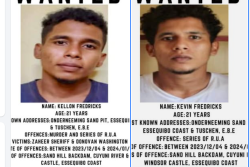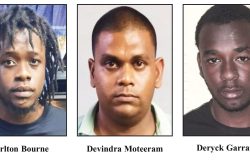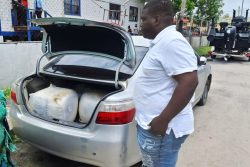Following my recent Nostalgia update on Cosmos Sports Club, Dr Ian McDonald challenged me to write a tribute to the other clubs in British Guiana in the pre-Independence years. The role of these clubs in our maturation was so significant, that I hasten to record for posterity the following snippets.
Georgetown Cricket Club
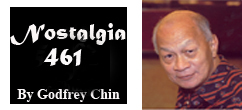 The oldest cricket club in the Caribbean can truly be credited for the emergence of the West Indies cricket team, and also cricket in British Guiana. Founded 1858, it shared playing facilities at the Parade Ground (now Independence Park) opposite the Promenade Gardens. The club had its own pavilion and flagstaff, and the initial intercolonial matches between BG, Trinidad and Barbados, were played at that Mayor and Town Council venue.
The oldest cricket club in the Caribbean can truly be credited for the emergence of the West Indies cricket team, and also cricket in British Guiana. Founded 1858, it shared playing facilities at the Parade Ground (now Independence Park) opposite the Promenade Gardens. The club had its own pavilion and flagstaff, and the initial intercolonial matches between BG, Trinidad and Barbados, were played at that Mayor and Town Council venue.
In 1883, with threats of losing playing privileges there, the members subscribed to lease the Bourda field, and by dint of hard dedicated effort by subsequent committees, GCC became a billiard-table mecca for cricket worldwide. The concept of a touring West Indies squad started when they organized a combined tour to USA and Canada in 1886. Member Alty O’Dowd of Fogarty’s underwrote the expenses of the WI team to England in 1933. The GCC was also responsible for cricket in BG until 1943, when the BG Cricket Board of Control was formed.
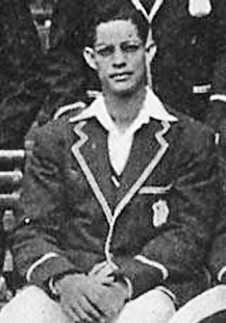
The GCC is a shining example of indefatigable dedication by loyal, hardworking officials over 150 years, and with the unstinted cooperation of members, this club emerged as a ‘shrine’ for sports. National Sports stars emerging from their ranks included E E Wright, Maurice Green, Maurice Fernandes, John Dare, the Wights, Thomases, Comachos and De Freitases. In recent times with the opening up of membership, Carl Hooper, Alvin Kallicharran, Faoud Bacchus, Ivor Mendonca, and Shiv Chanderdpaul were luminaries in our sporting achievements.
West Indies won their first cricket Test at Bourda in 1930 under the captaincy of Guyanese Maurice Fernandes when George Headley scored a century in each innings. The first post-World War II Test victory by West Indies was also at Bourda versus the touring Gubby Allen’s MCC 1948, when the local star Robert Christiani made a sparkling 51.
Bourda also hosted the Brandon Cup Caribbean Tennis Championships, cycling and athletics olympiads that brought many international sports stars, including Herb McKinley, Harrison Dillard, Jack Heid and Ted Smith to our shores. Other major events included Calvacade of Sports, plus international hockey, boxing, and football matches. The club installed a squash court around 1974.
British Guiana Cricket Club
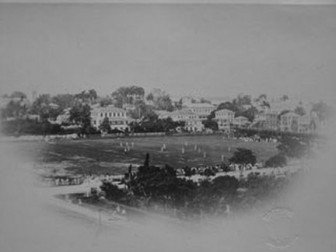
The British Guiana Cricket Club, Thomas Lands (GSC after Independence) was formed in 1896 by those denied membership of Bourda, and became a prominent force in cricket producing cricket heroes Robert Christiani and brothers Harry, Cyril, Bert and Johnny, plus Clifford McWatt, Brian Patoir, Charlie Stayers, Reds Murray, and Edwin Mohamed. The Mittleholzers – Cassian, Sheila and Claire – Edna Northey, and Colin Bannister also contributed immensely in the field of hockey.
The Christiani brothers ought to be in the Guinness Book of records – five brothers playing national cricket.
The two sprawling fields in Thomas Lands were the venue of previous League of Coloured People fairs, cycling and boxing tournaments. The Guiana festivals of 1960, ’61 and ’62 were held there, as well as a mammoth industrial and commercial exhibition when Queen Elizabeth II visited in February 1966. I paid 4 cents in 1945 to enter the grounds for a grand fireworks display celebrating the end of WWII, and staged Radio Demerara Needy Children fundraisers, Halloween and Hula Hoop dances in the pavilion in the late fifties.
Demerara Cricket Club
The Demerara Cricket Club was formed in 1929, to further the convergence of a multi-ethnic professional middle class so it could challenge the planter/merchant elite, and expand the opportunities for cricketing talent, dormant in Queenstown and its environs. Lance Gibbs and cousin Clive Lloyd emerged to international fame from their stables. Other luminaries included John Trim, Philbert Blair, Roy Fredericks, Roger Harper, Fred Wills, Berkeley Gaskin, Colin Wiltshire, Vincent Adams and Keith Semple, to name a few. Today I am happy to observe games being played every day at this facility, which is well maintained.
Malteenoes Sports Club
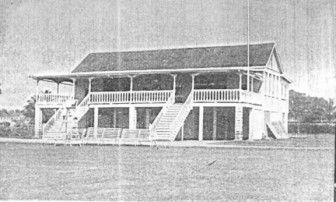
Malteenoes on Thomas Road, which was formed in 1902, produced Glendon Gibbs, Rex Collymore and Pat Legall, The club is very active today with weekly activities, including martial arts and national Scrabble contests.
Other clubs emerging for the benefit of public service employees included Transport and Harbours (founded 1937), plus Post Office in Thomas Lands, and Police in Eve Leary. The latter excelled in Case Cup – football and basketball, with stars including Jainarine Singh, Erskine, King, Senor Braithwaite and Skip Roberts. Eve Leary hosted annual Military Parades – Concour D’Elegances – and police gymkhanas. Malcolm Ward a talented all-rounder was killed in an accident during a motorcycle display.
The ethnic groups catered for their flock with their own clubs and grounds north of the capital city. Chinese Sports was founded 1931; Portuguese SC (1924); and East Indian CC (1930). While both Chinese and East Indian became Cosmos and Everest respectively, to open their membership after Independence in 1966, the ‘banlon’ Republic years sparked mass migration of these groups abroad. Everest still exists today; they are expanding their field facilities and have hosted some minor international cricket matches recently. In New Amsterdam the Catholic Men’s Club on the esplanade as well as estate clubs on the coast, invigorated by the sugar industry, produced Rohan Kanhai, Basil Butcher, Alvin Kallicharran, Joe Solomon, Ivan Madray, Leonard Baichan and Roy Fredericks by the late sixties.
Frank Bettencourt and I played cricket for the Catholic Men’s Club, New Amsterdam, around 1964 and in my limited sports career I boasted of playing on the fields of Sabina, Kensington and Queen’s Park; and on Panam Fields in Cali, Colombia and Mexico; the Paramaribo Stadium; Trinidad Savannahs; and from Rosehall to Suddie – including the clay field at Timehri. I mention these experiences to emphasize the benefits of active club activity for keen sportsmen yesteryear. Must mention that touring abroad facilitated nuff shopping abroad, in spite of the limited $15 travelling allowance.
The lessons for today’s youth as reflected in our sports stars of yesteryear is ‘stictuitiveness’ – dedication, involvement, practice, discipline, pride and sacrifice to achieve a national cap in spite of tremendous odds. I recall Selassie Small in the mid forties, stevedoring all day, taking time off to walk down Regent St to GFC in his football boots, refresh with mauby and bun on the way, and then turn in a sterling performance versus Trinidad – a Maginot defence line with Man Man DaSilva at left back and Ted Nurse in goal. There was a quick after-match celebration toast in the pavilion, and pleading for a bicycle ‘tow’ he rushed back to the waterfront for the 8pm shift.
Football
Our football headquarters was the eastern sward of Bourda, where Georgetown Football Club was located. Apart from local annual competitions for the Peppiette, McDonald, Russell and FA Trophy, several visits from Trinidad and Suriname were hosted. GFC also staged the Wembley celebrations for Queen Victoria and in the fifties, Circus Romana. The exhibit of the replica of that highly endowed male, ‘Emanuel’ displayed in the pavilion was a main attraction. Alya remember that!
In 1972, GFC installed the first lights for night games, and Guyana successfully defended their Caribbean hockey championship title which they held since 1961. The club also had a midsize swimming pool where aquatic sports by the colleges were held annually. I remember a charming Olga Lopes-Seale as a bathing beauty in the fifties basking there in her Esther Williams years. Outstanding national stars from the GFC included Man Man De Souza, Eddie Caetano and Maurice Pollard as their hockey team produced many national stars.
Victoria and St Barnabas (both founded 1921), Infantry, Artillery, Thomas United, Northern Rangers, Police and Charlton were also strong clubs competing for local football honours. When yatching-shoe football was popular in the late fifties, Red Banners and Juventus were ‘tops’ at the open Parade Ground venue – free for the local sports fans.
I must mention here national football stars who gave yeoman service to the nation before Independence. These included Vivian Lee, Ted Nurse, Selassie Small, Man Man De Souza, Buddy Parks, Senor Braithwaite, Bruiser Thomas, Dan Harris, the Van Genderen Brothers, Maurice Moore, Amigo Dyal, Waterboat Weithers, Compton Julian, Monty Hope, George Greene, Herbie Jordan, George Braithwaite, Bulla Moses, Sydney Campbell, Patsy Peters, Eddie Caetano, Cosmos and Ingram Layne, Sam Woolford and Sergio Marshall. Must also mention the skilled old timers – O T Donald, Stanley Moore and E D Small, who were legends in their times.
Football in the forties at GFC was an exhilirating experience. Straight from public school (at age 8) we slipped into the Regent St Ground entrance before the groundsman from the small caretaker’s cottage set up the ‘turnstile,’ and hid under the single stand next to the pavilion. The ground’s spectators were required to hold a rope along the eastern and southern side of the match field, that snaked like a roller coaster as the ‘horseguard’ held back the crowd to permit throw-ins and corner kicks, while the spectators on either side encroached on the field not wanting to miss the action. Hell, BG had the ‘wave’ long before the Brazilians at World Cup football.
Both Bourda swards were famous for the tree spectators that filled the giant samaan trees outside the ground on match days. I recall helping a handicapped friend to climb a tree on the Lama Dam before it became Merriman Mall. First he disassembled his wooden leg and had it pulled up by rope, and then hoisted himself up into the swaying branches, much to the cheers of fellow tree spectators. There was no space for me on the branches which I expected to break, so rather than do a Humpy Dumpty I sneaked into the GFC ground to peek cricket at Bourda from their stands, where that damn DIH sign blocked the view of half the pitch and field. Ya think it easy watching 50% of an Intercolonial cricket match, BG versus Trinidad, and seeing only one wicket. Transistor radios were not available in 1945.
The YMCA founded in BG in 1882 on Thomas Lands did have a champion football team for a while, as did CYO on Robb Street. The YMCA specialized in indoor games for their youths, and their annual May Day fair with maypole plaiting was a popular attraction. CYO, an outreach of the Catholic community catered for the kids around Lacytown and Bourda, with a weekly 2 cents 16mm film show, plus lots of indoor games, with Father de Caires donning the gloves to teach boxing plus martial arts. CYO had a ground off YMCA, west of the golf course with an entrance on Kelly Dam, which became Carifesta Avenue in the early seventies. Another club that contributed to the recreation of our youths was Clubland in the next block west of CYO – on Robb Street opposite Tang’s Bakery.
When the Luckhoo Pool was opened in the early sixties, the YMCA instituted an aggressive swimming programme that embraced thousands. The YMCA at Sussex St, Albouystown also catered for youths in south Georgetown. George Ferguson, Squeaky Hinds and John Cha-Cha Embleton were YMCA stars.
The YWCA on Brickdam and the Dorcas Club on D’Urban Street also played major roles in the maturation of our youth with dance classes, annual fairs and amateur stage productions. The Penumbrians formed in the early ’50s catered for civil servants, many of whom became icons in later years. Outstanding Penumbrians included Vibart Lampkin, Pluto Martindale, and Vibart McArthur, etc.
Booker’s Staff Sports Club was built in the fifties, while Sproston’s, Gandhi Youth and Muslim Youth Organisation built their club facilities along Non Pareil Park. For me, all the associations – teachers, boy scouts, girl guides, nurses, masonic lodges, friendly/burial societies, choral groups – were all clubs, despite identifying themselves in distinct categories, and all contributed to the nation’s welfare, social and cultural heritage.
Should I include the Salvation Army on Alexander Street? Oops, nearly forgot the Catholic Guild Club founded in 1923 on Wellington Street and South Road, which also housed St John’s Boys School in the early seventies.
(To be continued)




